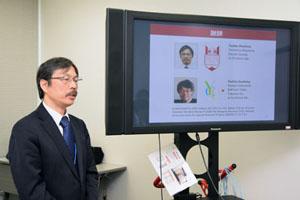
Copyright : Waseda University
A research group from Waseda University, Japan, has discovered that by controlling CRMP4, a protein that regulates the body’s cytoskeleton, it is possible to prevent reactions that impede recovery.
Santiago Ramon y Cajal, the “father of modern neuroscience,” stated it is very difficult to reconstruct nerves once the central nervous system has been damaged. This is true for spinal cord injuries where inflammation, scar formation, and nerve degeneration present many obstacles to recovery. Attempts to control individual reactions have been made but a method to prevent all reactions simultaneously has yet to be found. A research group consisting of Professor Toshio Oshima (Faculty of Science and Engineering), Jun Nagai (PhD candidate and member of Japan Society for the Promotion of Science), and Professor Yoshio Goshima (Yokohama City University) have focused their attention on CRMP4, a protein that regulates the body’s cytoskeleton, and discovered that by controlling this protein, it is possible to prevent reactions that impede recovery.

Copyright : Wadeda University
A major concern of inhibiting proteins such as CRMP4 is the potential, sometimes lethal side effects. However, during Oshima lab’s experiments, a mouse with an inhibited CRMP4 protein did not display any abnormal behavior or side effects. This observation suggests that there are few side effects to inhibiting CRMP4 compared to other methods of treatment for spinal cord injuries. Treatment based on transplanting iPS stem cells has received considerable attention over the years but even if cells of the central nervous system are increased through this method, the reactions that impede recovery remain. If CRMP4 in the stem cells is inhibited however, it is expected that a synergistic effect among all cells will contribute to nerve reconstruction. It is possible that this discovery, which provides understanding of the nature of central nervous system disorders, will also contribute to treatment of incurable disorders such as cerebral apoplexy and alzheimer’s disease. Research results were published in the online English language publication “Scientific Reports”(Nature Publishing Group)on February 5th, 2015.








